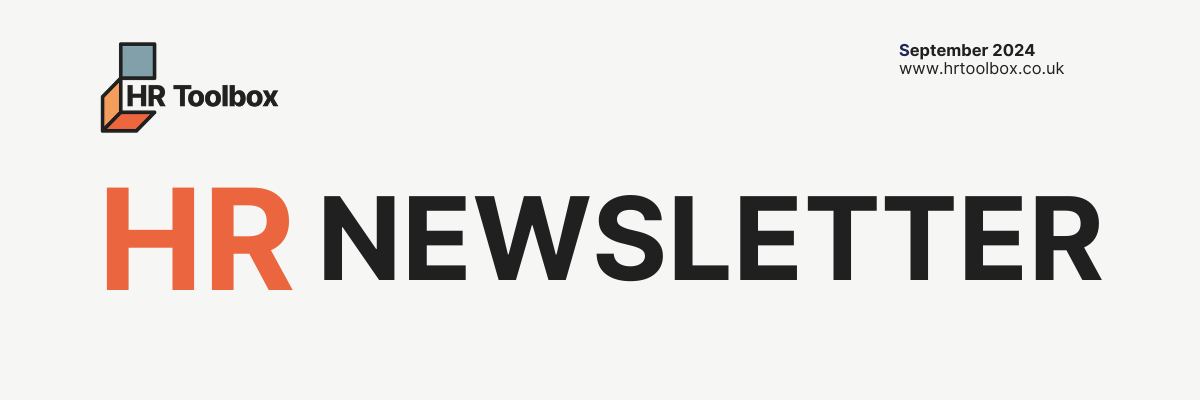Handling grievances
Navigating Workplace Grievances: A Guide to Resolving Issues
Introduction:
In any workplace, conflicts and grievances can happen. Ignoring or mishandling them can lead to toxic work environments that negatively affect productivity. As a responsible business owner, it's crucial you address grievances promptly, effectively and in line with your Company policy; this article will show you our HR Toolbox Tips on how.

Acknowledge the Problem:
The first step in addressing any workplace grievance is acknowledging its existence. Pretending that issues don't exist will only make a difficult situation worse. Employers must acknowledge relevant concerns and be honest with themselves about how they impact individuals and the wider team.
Open Communication:
Encourage open communication between all parties involved. Create a safe and respectful space where employees can express their concerns without fear of retribution. As a manager or colleague, actively listen to grievances and make a conscious effort to understand the emotions and perspectives behind them.
Focus on Facts and Evidence:
When addressing grievances, emotions can and will naturally feed into the process. Whilst acknowledging emotions and taking an empathetic approach to them, it's important to focus in on the factual information and evidence. Gather relevant data, documentation, and witness accounts to objectively evaluate the situation and be sure to make decisions based on the facts you are able to establish.
Address Issues Early:
Don't wait for grievances to escalate. Address them as soon as they come to your attention. Early intervention can prevent minor problems from snowballing into major conflicts. Prompt action demonstrates your commitment to a positive and proactive work environment. Many grievance policies refer to seeking to informally resolve grievances in the first instance.
Confidentiality and Sensitivity:
Maintain confidentiality throughout the grievance handling process and consider engaging outside independent HR Consultants if necessary. Respect the privacy of all parties involved and refrain from discussing the matter with unrelated colleagues. Treat each grievance with sensitivity and empathy, ensuring a supportive environment for those involved.
Actively Encourage Constructive Feedback:
Actively encourage employees to be vulnerable with each other and to engage in positively intended constructive feedback regularly. The output from these sorts of conversations should be a set of agreed action points against which each person should be encouraged to be accountable for. All of theses steps should be openly explained are in promotion of a workplace that wants to do all it can to avoid grievances in the first place.
Constructive feedback can lead to positive changes and enhance overall job satisfaction.
Collaborate on Solutions:
Involve all parties in finding a resolution. Collaborative problem-solving can lead to more sustainable and mutually beneficial outcomes. When employees actively participate in resolving grievances, they feel heard and valued, fostering a sense of ownership and accountability. Workplace mediation is a very effective method to achieve this.
Implementing Solutions:
Once a resolution has been reached, act promptly in implementing it and perhaps seek external advice & guidance in certain cases. Clearly communicate the agreed-upon actions to everyone involved wherever possible and ensure these are followed-through. Demonstrating commitment to resolving grievances shows that the organization takes employee concerns seriously.
Document the Process:
Be sure to keep good records of evidence, meetings held and letters sent. It's important to remember the Acas Codes of Practice set the minimum standard of fairness that workplaces should follow. They are used by employment tribunals when deciding on relevant cases.
Monitor and Evaluate:
Keep a close eye on the situation even after the grievance has been resolved. Monitor how the implemented solutions impact the work environment and employee satisfaction. Perhaps it's time to conduct a short employee survey. Above all else, be prepared to reassess and adapt if necessary to prevent a recurrence of similar issues.
Conclusion:
Handling workplace grievances demands a prompt and proactive approach. As business owners, it is your responsibility to address these issues effectively, fostering a positive and supportive work environment. By acknowledging problems, promoting open communication, and focusing on facts, you can work together with your team to resolve conflicts and create a more harmonious workplace for everyone. Remember, addressing grievances is not just a matter of policy or legislation; it's a crucial aspect of maintaining a thriving and successful organization.
Get In Touch











